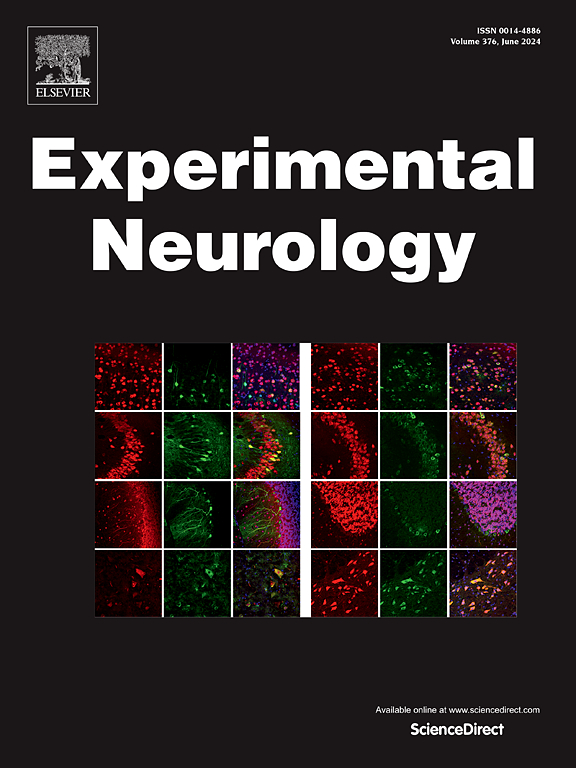Inhibition of histamine receptor 3 alleviates sevoflurane-induced hypomyelination and neurobehavioral deficits
IF 4.6
2区 医学
Q1 NEUROSCIENCES
引用次数: 0
Abstract
Background
Inhalational anesthetic sevoflurane can cause myelination damage in developing brain. This study examines the effects of histamine receptor 3 (H3) antagonist thioperamide on sevoflurane-induced hypomyelination and neurobehavioral deficits.
Methods
Neonatal C57BL/6 mice were exposed to sevoflurane for consecutive three days and treated with H3 receptor antagonist thioperamide. Myelination was assessed in the hippocampus and corpus callosum. The neurobehavioral functions were also examined. Primary oligodendrocyte progenitor cells (OPCs) were used for in vitro experiments and the underlying mechanism.
Results
Inhibition of H3 receptor with thioperamide significantly alleviated sevoflurane-induced impairments in myelination and neurobehavioral functions. In vitro experiments showed that thioperamide reversed the effects of sevoflurane on OPCs migration, proliferation and differentiation into mature oligodendrocytes. Mechanistically, thioperamide improved sevoflurane-induced hypomyelination may through H3 receptor-mediated GSK-3β/β-catenin pathway.
Conclusion
H3 receptor antogonist thioperamide could protect developing brain against hypomyelination and neurobehavioral deficits after repeated sevoflurane exposure. Therefore H3 receptor is a potential target for preventing anesthetic-induced developmental neurotoxicity.
抑制组胺受体3可减轻七氟醚诱导的髓鞘退化和神经行为缺陷。
背景:吸入麻醉剂七氟醚可引起发育中的大脑髓鞘损伤。本研究探讨组胺受体3 (H3)拮抗剂硫哌丁胺对七氟醚诱导的髓鞘退化和神经行为缺陷的影响。方法:将新生C57BL/6小鼠连续暴露于七氟醚3 d,并用H3受体拮抗剂硫哌丁胺处理。评估海马和胼胝体的髓鞘形成。同时检测神经行为功能。采用原代少突胶质细胞祖细胞(OPCs)进行体外实验,探讨其作用机制。结果:硫哌丁胺抑制H3受体可显著减轻七氟醚诱导的髓鞘形成和神经行为功能损伤。体外实验表明,硫哌丁胺逆转了七氟醚对OPCs迁移、增殖和向成熟少突胶质细胞分化的影响。机制上,硫哌丁胺改善七氟醚诱导的髓鞘退化可能通过H3受体介导的GSK-3β/β-catenin途径实现。结论:H3受体拮抗剂硫哌丁胺对反复暴露七氟醚后发育中的大脑有保护作用。因此,H3受体是预防麻醉诱导的发育性神经毒性的潜在靶点。
本文章由计算机程序翻译,如有差异,请以英文原文为准。
求助全文
约1分钟内获得全文
求助全文
来源期刊

Experimental Neurology
医学-神经科学
CiteScore
10.10
自引率
3.80%
发文量
258
审稿时长
42 days
期刊介绍:
Experimental Neurology, a Journal of Neuroscience Research, publishes original research in neuroscience with a particular emphasis on novel findings in neural development, regeneration, plasticity and transplantation. The journal has focused on research concerning basic mechanisms underlying neurological disorders.
 求助内容:
求助内容: 应助结果提醒方式:
应助结果提醒方式:


